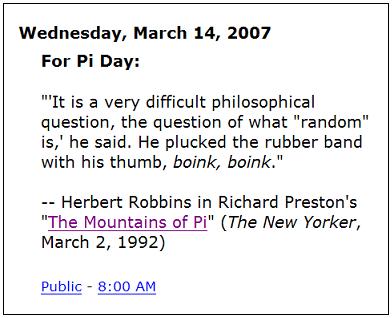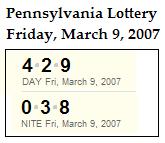"Geometry,
Theology,
and Politics:
Context and Consequences of
the Hobbes-Wallis Dispute"
(
pdf)
Excerpt:
"We are left to conclude that there was something significant in
Hobbes's philosophy that motivated Wallis to engage in the lengthy and
vitriolic denunciation of all things Hobbesian.
In point of fact, Wallis made no great secret of his motivations for
attacking Hobbes's geometry, and the presence of theological and
political motives is well attested in a 1659 letter to Huygens. He
wrote:
But regarding the very harsh diatribe against Hobbes, the
necessity of the case, and not my manners, led to it. For you see, as I
believe, from other of my writings how peacefully I can differ with
others and bear those with whom I differ. But this was provoked by our
Leviathan (as can be easily gathered fro his other writings,
principally those in English), when he attacks with all his might and
destroys our universities (and not only ours, but all, both old and
new), and especially the clergy and all institutions and all religion.
As if the Christian world knew nothing sound or nothing that was not
ridiculous in philosophy or religion; and as if it has not understood
religion because it does not understand philosophy, nor philosophy
because it does not understand mathematics. And so it seemed necessary
that now some mathematician, proceeding in the opposite direction,
should show how little he understand this mathematics (from which he
takes his courage). Nor should we be deterred from this by his
arrogance, which we know will vomit poison and filth against us.
(Wallis to Huygens, 11 January, 1659; Huygens 1888-1950,* 2: 296-7)
The threats that Hobbes supposedly posed to the universities, the
clergy, and all religion are a consequence of his political and
theological doctrines. Hobbes's political theory requires that the
power of the civil sovereign be absolute and undivided. As a
consequence, such institutions as universities and the clergy must
submit to the dictates of the sovereign in all matters. This extends,
ironically enough, to geometry, since Hobbes notoriously claimed that
the sovereign could ban the teaching of the subject and order 'the
burning of all books of Geometry' if he should judge geometric
principles 'a thing contrary to [his] right of dominion, or to the
interest of men that have dominion' (Leviathan (1651) 1.11, 50; English Works**
3: 91). In the area of church government, Hobbes's doctrines are a
decisive rejection of the claims of Presbyterianism, which holds that
questions of theological doctrine is [sic] to be decided by the
elders of the church-- the presbytery-- without reference to the claims
of the sovereign. As a Presbyterian minister, a doctor of divinity, and
professor of geometry at Oxford, Wallis found abundant reason to reject
this political theory."
* Huygens, Christiaan. 1888-1950. Les oeuvres complètes de Chrisiaan Huygens. Ed. La Société Hollandaise des Sciences. 22 vols. The Hague: Martinus Nijhoff.
** Hobbes, Thomas. [1839-45] 1966. The English Works of Thomas Hobbes of Malmesbury, now First Collected and Edited by Sir William Molesworth. Edited by William Molesworth. 11 vols. Reprint. Aalen, Germany: Scientia Verlag.
Related material:
"But what is it?"
Calvin demanded.
"We know that it's evil,
but what is it?"
"Yyouu hhave ssaidd itt!"
Mrs. Which's voice rang out.
"Itt iss Eevill. Itt iss thee
Ppowers of Ddarrkknesss!"
-- A Wrinkle in Time

"After A Wrinkle in Time was
finally published, it was pointed out to me that the villain, a naked
disembodied brain, was called 'It' because It stands for Intellectual
truth as opposed to a truth which involves the whole of us, heart as
well as mind. That acronym had never occurred to me. I chose the name
It intuitively, because an IT does not have a heart or soul. And I did
not understand consciously at the time of writing that the intellect,
when it is not informed by the heart, is evil."
See also
"Darkness Visible"
in ART WARS.












Recent Comments